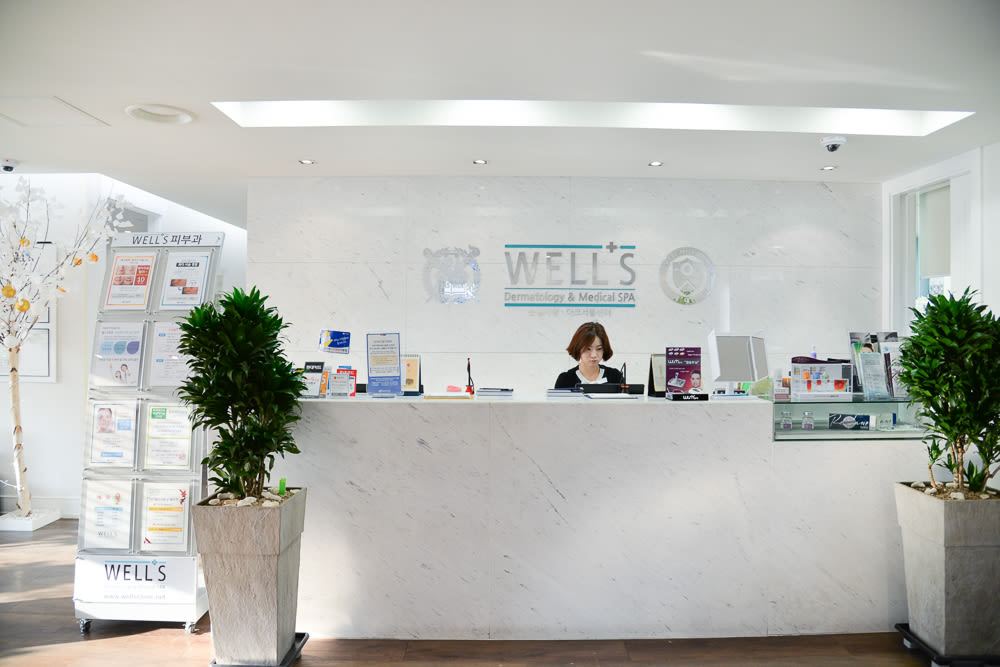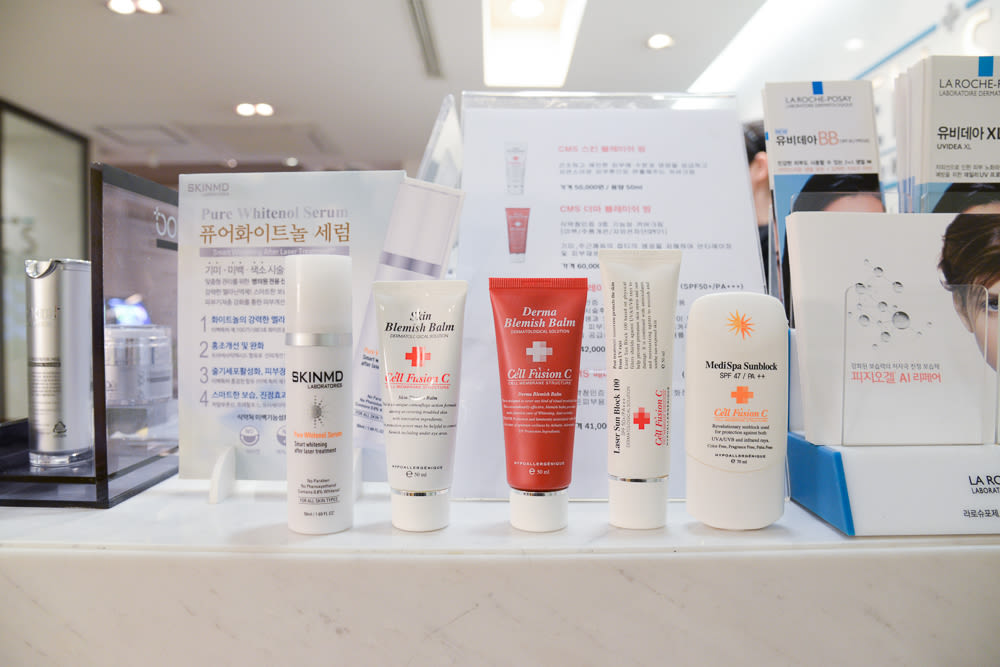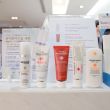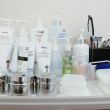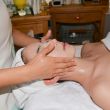Stella Kim knows good skin. As a Korean skincare devotee and consultant, there's no product she hasn't tested—and almost no procedure she's not game to try. She's already talked us through, and completely updated, our version of the 10-step routine (OK, her version actually has 11 steps...). Today, she takes on acne, with the help for some very experienced friends. Read on:
As anyone who survived adolescence without much acne to speak of will tell you, when it becomes a part of your life in your 20s without any warning, you feel woefully underprepared. I put faith in nearly every “miracle' product with surgery-like claims that would magically heal my skin. Nothing worked; I couldn’t figure out what was going on. I religiously followed the triple-cleansing method (makeup remover followed by foam cleanser followed by gentle exfoliator) and wore very little makeup, which means residue buildup wasn’t the culprit. My best bet was that my hormone levels were probably abnormal (which is more common than you might think).
A friend of mine experiencing the same skincare concerns had been on Accutane for almost a year, and her dermatologist recommended that she use over-the-counter chemical peels at home. Every time she did, her face, neck and hands would completely dry out, unresponsive to moisturizing creams for days. Her flaky dead skin would get all over her black wardrobe and bed sheets…there was no way I was going to try this myself.
Instead, I made an appointment with Dr. Wonwoo Choi at Wells Dermatology and Medical Spa in Gangnam, Seoul, when I was in Korea for the summer. Dr. Choi is one of the most coveted medical dermatologists in Seoul and his specialties are in acne scar remodeling, laser treatments for hyperpigmentation, and non-surgical face lifting. He has four branches in Seoul (and most recently one in Ulaanbaatar, Mongolia) in response to Korean women’s demands for luxury, professional skincare services. Peeking around the Gangnam branch, you can find a number of rooms for different laser procedures along with others for spa treatments and after-care facials.
I went to Dr. Choi hoping he might recommend a product that could fix everything. But after one consultation (followed by two months of relatively rigorous treatment), I learned that ridding yourself of acne without destroying your skin in the process takes work—serious work. Twice a week, I’d visit Dr. Choi’s office for a soft-peeling procedure that would immediately be followed up with a whole calming after-care procedure. His philosophy is that the steps you take after a procedure are actually much more important than the procedure itself—if your skin is not well hydrated or nourished enough, no treatment will work, period. The in-office procedure is this:
-
Cleanse and exfoliate: a Korean 2- to 3-step cleansing process using either a cream or scrub-type cleanser, depending on skin type
-
Tone: a simple cotton pad swipe to balance pH levels on the skin
-
Gently massage face with a serum that hydrates and nourishes the skin
-
The Weyergans peel: This is a type of glycolic acid peel that Dr. Choi uses in very small amounts of on sensitive skin types. The Weyergans chemical is lightly patted onto the skin as a small fan is placed near your face to blow away the stinging sensation. But seeing that everyone has different needs and the Weyergans peel might not be for you, other popular peels in Korea include the Aqua Peel (using both AHA and BHA to clear away blackheads and residue), the FCR Peel (using a special coral extract formulation), and the Aladdin Peel (in which micro-needles are used to deposit seaweed extract and other natural ingredients deep inside the dermis).
-
A chilled calming mask is used to soothe the irritated skin. Different masks are used depending on skin type, but they will usually be homemade masks with soothing and nourishing ingredients. The coolness of the mask helps to calm irritated skin.
-
An esthetician will extract any infected blemishes and apply topical medication on the infected areas.
-
An iontophoresis machine is used to deliver hydrating and nourishing ampoules deep inside skin barriers. Intophoresis refers to a process where ions flow through a medium. In other words, it is a non-invasive injection into the skin applied through an electric field. Here, you hold onto a metal rod while an esthetician massages another one over your face—this process allows ingredients to flow through the skin, with the two metal rods making up the applied electric field.
-
A chilled towel is used to gently wipe off any remaining liquids.
-
A mask pack is used to tighten the pores and further calm the skin. This mask starts as a thick cream-like texture and hardens into rubber, which helps firm your skin and makes it easy to peel off.
-
The whole process is wrapped up with a Korean skincare routine.
Because Dr. Choi is an artist, in addition to a really good dermatologist, several weeks of facials were followed with brightening laser treatments and UV treatments that serve to rid the skin of any acne scarring. These lasers can be used to remove hyperpigmentation as well, and it is the most popular treatment in Korea. Immediately after these laser treatments, a similar process as the one above is used to nourish the skin. The difference lies in the vitamin C—they have brightening and cell-regenerating benefits, but is not easily absorbed by the skin through simple serums or creams. Hence, iontophoresis is used to deliver it deep into the dermis.
The real reason I’m telling you all of this? For some at-home chemical peel inspiration. When trying any sort of peel at home, especially if it’s meant to address stubborn acne, make sure you have a follow-up regimen that will help your skin get all the nutrients it needs. Sure, I still have acne breakouts every now and then—who doesn’t? But knowing how to handle it is the first step in actually caring for your skin.
—Stella Kim
Photos courtesy of the author.
